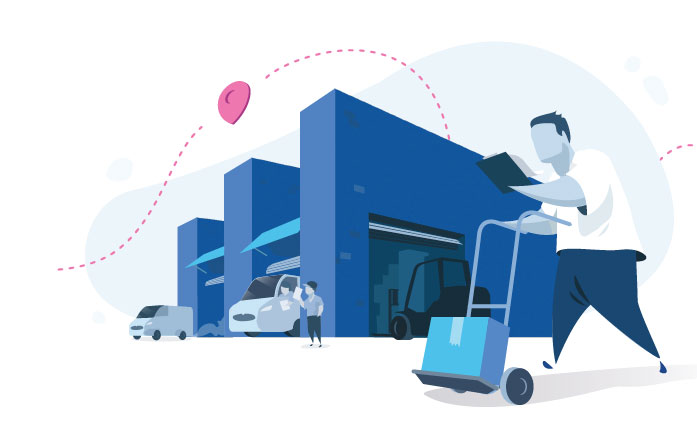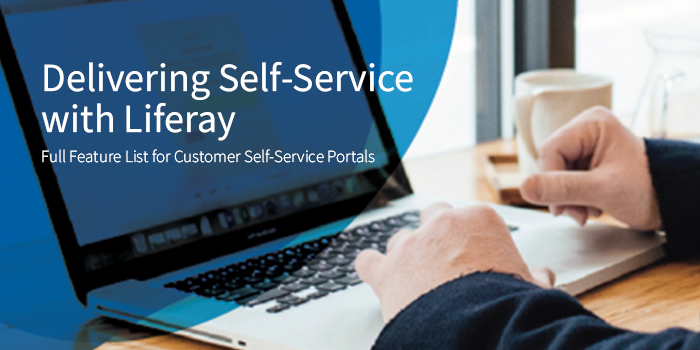
7 Best Practices for B2B E-Commerce Success
As B2B buyers grow more accustomed to making purchases online, they increasingly expect the same experience that they get from online retailers. However, B2B is not the same as B2C, and B2B sellers need to craft their digital commerce strategy with a careful eye to the needs of their buyers.
This article covers seven best practices that B2B sellers can use to accelerate the success of their e-commerce channel, plus offers advice on choosing the correct technology to support each best practice.
For more resources on B2B digital commerce from Liferay, Click here[/vc_column_text][/vc_column]


The Change in B2B Buying Expectations
As a B2B seller, the best way to stand out from your competition and make sure customers stay with you for the long-term is to provide effortless buying experiences that make customers’ jobs easier. B2B buyers typically want to spend less time and energy on researching and completing purchases, compared to retail buyers who are shopping for themselves.
There are many things that B2B sellers can learn from the B2C e-commerce space. The trick is to take those tactics and tailor them for the unique needs of B2B, creating a new set of best practices that match B2B buyers’ expectations.
The Path to Purchase: B2C vs B2B
B2C Buyers
- Emotive, in-the-moment purchase decisions
- Complex price search and product comparison
- Value an immersive multichannel purchase experience
- Motivations are often aspirational
B2B Buyers
- Rational, business-based decisions
- Product comparisons based on features and technical specifications
- Pricing (and discounts) often bound by contract
- Value is placed on simplicity, agility and saving time
What Makes a Great B2B Commerce Experience?
Successful B2B experiences come down to three core tenets:
Efficient – Once a contract is agreed on, B2B buyers generally have to do the same tasks each month (such as check order status, ensure payment was processed and reorder). Make sure these are the easiest things to do on your site so you can deliver ongoing value by saving them time and effort.
Informed – Whether you’re a manufacturer or distributor, you probably know more about your products than your buyers. Connect the dots for them by linking related content, datasheets and products together so they understand exactly what they need.
Accessible – Make sure your site looks good on any device, especially mobile. Your buyers may not need a native mobile app, but they could be checking on orders or making last minute purchases from their smartphones.
With these three tenets as guiding posts, companies can create online buying experiences that help them stand out, winning new customers and growing their accounts over time.

7 Best Practices for B2B E-Commerce
1. Simplify Catalog Navigation

Most B2B sellers have massive catalogs that are hard to navigate. Naming conventions can also be obscure, especially when product development chooses names that make sense to them (e.g., “Product-08TT”) but don’t mean anything for customers. By creating categories and product names based on how customers identify products, B2B sellers can improve discovery and make searching a catalog more intuitive.
Match It to Technology
1.
Look for an e-commerce platform that has customizable vocabularies and flexible control over the navigation menus so that you can easily test and improve the way you organize products across the site.
2.
Look for rich search features that allow you to analyze which terms customers use to look for products.
2. Offer Rich Product Content

B2B buyers increasingly do the majority of their research online without talking to a sales representative. Make this easier with detailed product information, related content, technical specifications, how-to documents and tools like exploded product views and part finders.
However, don’t overload buyers with information. According to research from Harvard Business Review, “the vast majority of sales professionals believe that giving customers more information helps them make better decisions… They ensure that customers have all the data, cases, and testimonials they might need to guide their decision making, and they lay out a suite of options, continually adjusting the offering as customer demand evolves. This approach seems like the right one, and it’s in keeping with suppliers’ desire to be more customer-centric. Yet it drives an 18% decrease in purchase ease, according to our survey of more than 600 B2B buyers. Piling on more information and options just makes things harder.”
The solution is to curate information through personalized content and recommendations. It’s your responsibility as the seller to help buyers find the right product, rather than leaving them to sort through the research themselves.
Match It to Technology
1.
Look for a platform that includes a customer feedback channel, either reviews, comments, forums or feedback forms. This provides a way for customers to ask questions, and you can use that data to figure out what content to create.
2.
Search for solutions that apply machine learning to make dynamic product and content recommendations at scale in order to automate the curation process.
3. Make Reordering Easy

B2B buyers have many tasks that they need to do every month, such as reordering or restocking certain products. If they have to go through the search process every month, you create opportunities for them to switch to a competitor. For instance, if they need to search resources outside of your site to help them decide on when to reorder, they could easily come across a competitor’s site and decide to switch.
Instead, offer one-click reordering or subscriptions to common products. By automating this common task, you make it easier for them to stick with your services. Some e-commerce platforms offer additional tools such as demand forecasting to further help customers know when they need to reorder.
Match It to Technology
1.
Look for a platform that supports completely flexible subscription management, including being able to customize the subscription term (for example, every week, every month or every six months).
2.
Make sure your buyers will have a way to manage their own subscriptions, including seeing current subscriptions and canceling or making changes.
3.
Find a platform that supports real time notifications based on different rules, such as inventory levels or expiration dates, to dynamically help customers know when to reorder.
4. Optimize for B2B Complexity

There are a lot of account settings that need to happen in the background for B2B buyers, including:
- Contract products and pricing
- Workflow approvals
- Providing access and permissions to different roles within the buying team
All of this should be configured within your digital commerce site so that buyers never have to think about it.
When they log in, they should only see products and pricing that apply to them. Purchases should automatically move through the correct approval workflows, and each new user should receive the correct role for their team’s structure.
B2C e-commerce platforms aren’t equipped to handle this level of complexity, which is why sellers will benefit from a platform that is B2B-first.
Match It to Technology
1.
Look for a platform that handles B2B requirements through configuration, not customization. With configuration, you will be able to scale faster and you can use standard approaches for similar customers, rather than creating something custom for each of them.
2.
Look for something with a portal heritage. Portals come from a heritage of providing personalized, role-based access within a single platform — exactly what B2B e-commerce needs.
5. Activate 24/7 Self Service

One of the major benefits of digital commerce is being able to offer 24/7 self service. This frees buyers to manage orders on their own schedule and takes the burden off of Sales to answer unexpected questions. Buyers have what they need at the moment they need it, removing friction from their experience.
Self service also provides new opportunities to scale the number of accounts a seller can reach. Customers that don’t have a sales rep (either because they’re a lower-value account or they’re in a limited territory) can now get the same quality of information and access to products as any top tier customer.
Match It to Technology
1.
Look for a platform with capabilities for knowledge management, blogs or document libraries. There should be an easy way to organize lots of content within wikis, libraries or similar views so that customers can search, save and comment on content.
2.
Leverage tools like chatbots to provide automated responses to common questions.
6. Empower Your Sales Reps

Don’t neglect the direct sales channel. Self service is great, but you may want to provide a more personal touch for high value accounts, especially if you have very complex products or a broad catalog. Many B2B buyers still expect to collaborate with sales reps on orders and value the unique insight their experience can bring.
Facilitate this by adding tools to your e-commerce site that give sales reps deep insight into the accounts they manage. Give them an at-a-glance view of recent order history, pending orders and product recommendations based on their buying patterns so that they instantly have context for each account. Automate insights with machine learning to trigger alerts when there might be an issue with an account. This ensures that reps knows exactly when to check on an account and take action to save it.
Match It to Technology
1.
Look for a platform that lets Sales log in as each account and see exactly what they see, including the ability to create and edit orders on their behalf.
2.
Identify what customer data is most valuable to Sales and bring that together on a dashboard or a mobile app for them to easily view.
7. Leverage Customer Insights

We’ve already seen that pulling in customer data through search and feedback channels is key to optimizing the B2B experience. Most B2B sellers have even more valuable data that lives within the CRM, marketing automation tools and analytics suites. By bringing this data together, sellers can uncover smarter ways to merchandize their products online.
Purchasing history can be used to decide on new product bundles, page elements can be reorganized to drive sales, content searches can inform the creation of new service
Match It to Technology
1.
Look for a platform with flexible integration standards. You should be able to bring other system data into the commerce platform so that you can get the most value out of your data.
2.
Look for a platform that applies insights to more than marketing. Customer data has incredible potential to streamline business processes and improve the overall performance of your e-commerce site.
In Conclusion
Effective B2B selling is about understanding the problems your buyers may have and solving them before they ask you to. To achieve this, B2B sellers need to work to understand the full customer purchase journey and solve the biggest challenges at each buying stage, whether that’s answering questions, explaining pricing or responding to different buyer roles within a team.
In addition, arming your sales team with this information equips them to respond to any challenge and accounts for the multi-contact experience that B2B buyers expect. Altogether, this comprehensive, cohesive view of the B2B commerce experience ensures that companies can keep delivering value to every customer, no matter where they are in their journey.
Moving Forward
Schedule a personalized demo of Liferay Commerce and we’ll show you how we can transform the way you sell to B2B buyers.
CONTACT US





